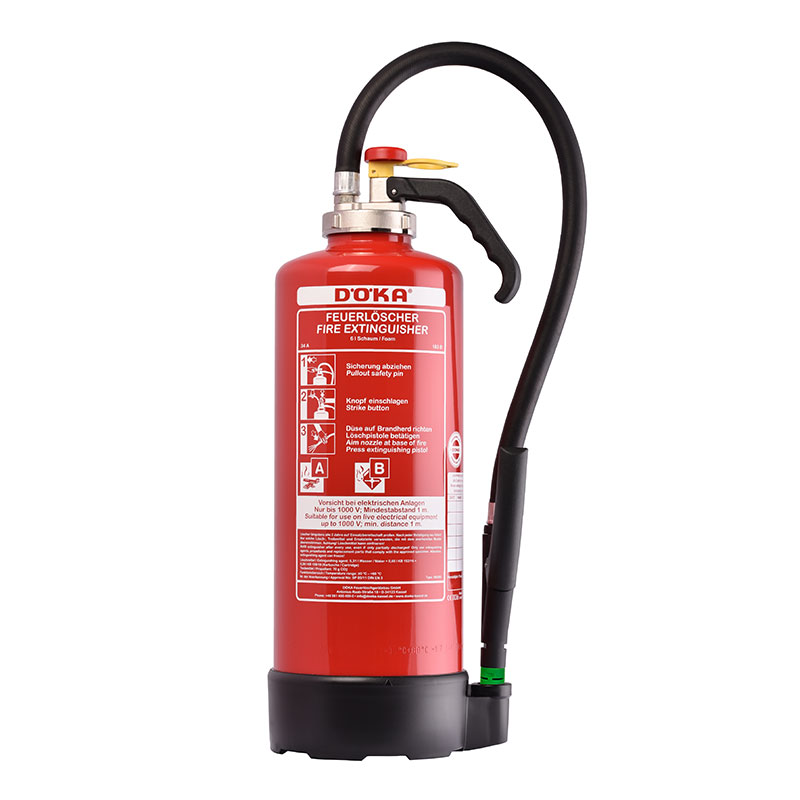Foam fire extinguishers have been "conquering" the German market since about the 1990s. They have replaced powder and water extinguishers in many areas of application.
Fire class suitability
Foam fire extinguishers are suitable for fire classes A (combustible solids) and B (combustible liquids). DÖKA offers foam fire extinguishers as continuous pressure and rechargeable fire extinguishers in the sizes 2, 3, 6 and 9 litres capacity.
Foam extinguishing agents are further differentiated in composition, i.e. how they are used in the fire extinguisher. This mainly influences the durability of the extinguishing agent and thus the follow-up costs for later maintenance.
1. premix foam extinguishing agent
Here, a highly concentrated foaming agent is mixed with tap water during the manufacture of the fire extinguisher (or during refilling) and filled into the extinguishing agent container. The foam agent is attacked by the other components contained in the water and accordingly degrades quickly. Since not all water qualities are the same everywhere, only the short period of 2 years can guarantee that these premix foam agents will provide their full performance during use. Thus, the maximum replacement period for these extinguishing agents is also 2 years. These premix solutions are mainly used in inexpensive foam fire extinguishers.
2. ready-made solutions
These foam extinguishing agents are supplied ready-mixed by the manufacturer and filled into the fire extinguisher as they are. By checking the tap water accordingly, it is possible to react to undesirable components in the tap water and the extinguishing agents become correspondingly more stable. As a rule, the maximum replacement period is 6 years. Ready-made solutions are mainly used for frost-proof fire extinguishers.
Our grease fire extinguishers, which in addition to fire classes A and B also cover fire class F (burning edible oils and fats), are also filled with a ready-made solution.
3. foam cartridges
The foam concentrate is kept "biostable" in a separate foam concentrate cartridge. The concentrate does not come into contact with tap water until the fire extinguisher is used and therefore has the longest shelf life. The maximum replacement period is 8 years. Another advantage is that only a very small amount of foam concentrate has to be disposed of, which considerably reduces costs. The environment is also pleased about this.
The extinguishing capacity of modern foam fire extinguishers today easily matches that of powder fire extinguishers and 15 extinguishing agent units are achieved with 9 litre devices, the maximum possible according to standards.
Foam fire extinguishers are used wherever it is not desirable or permissible to contaminate areas not affected by the fire with extinguishing agent.
In our modern lives, we are surrounded almost everywhere by electronic devices that would react sensitively to extinguishing agent residues from powder fire extinguishers, for example. So foam fire extinguishers are now used everywhere, home, office, modern manufacturing areas with sensitive equipment.
Advantages:
- No (hardly any) consequential damage caused by the extinguishing agent in areas not directly affected by the fire
- Extinguishing agent residues can be removed simply by wiping up
- Many foam fire extinguisher types are extremely powerful
- Very wide range of applications in fire classes A and B
Disadvantages:
- Low extinguishing agent durability with premix solutions.


